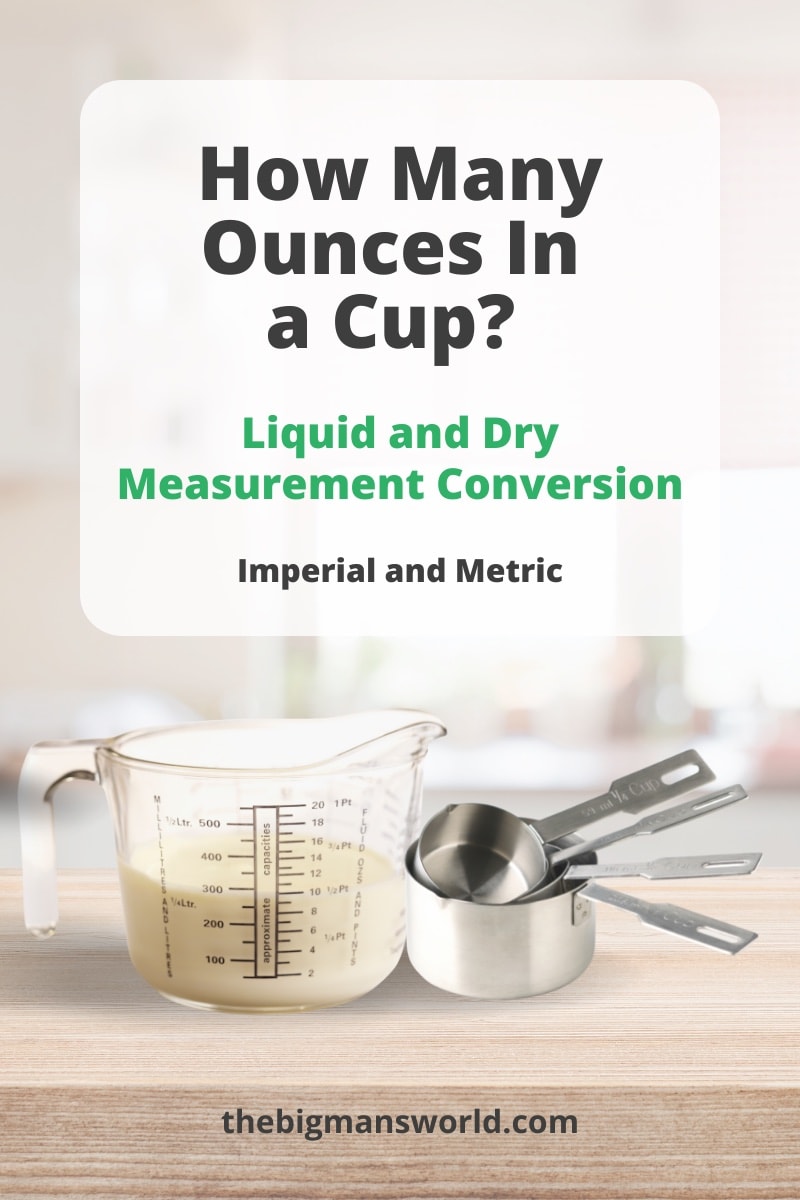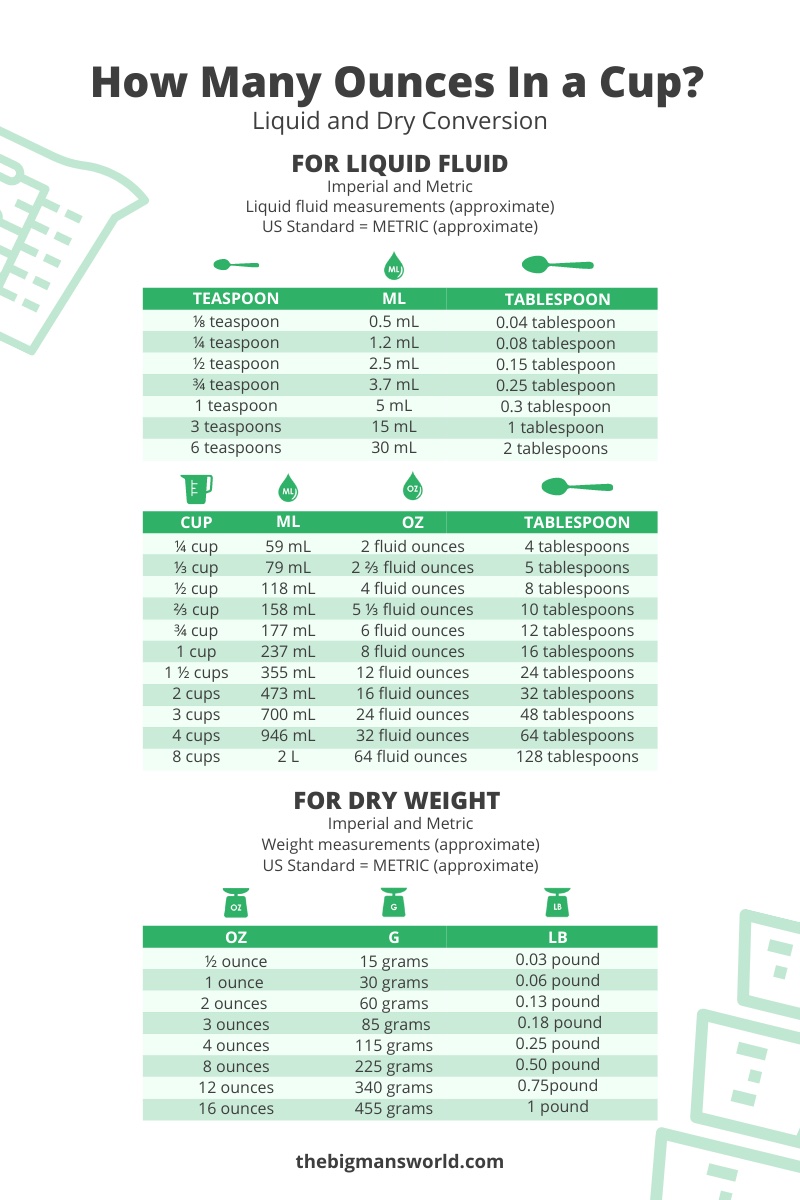I can’t tell you how many times I’ve come across a recipe with measurements I couldn’t wrap my brain around. Unfortunately, there are different measurement systems, and they’re not created equal. There are plenty of calculators online, but flipping back and forth between screens is a pain. It’s surprisingly easy to remember this conversion once you read through my cooking resources. This time, we’re covering ounces to cups!
What is an ounce?
An ounce is a unit of measure used to weigh out volume, weight, and mass. It measures small quantities of ingredients in recipes or the specific weight of an item. Ounces are used in America and other countries that follow the British Imperial system. In Europe and countries that use the metric system, grams are used instead.
What is a cup?
A cup is a kitchen tool used to measure and portion out dry or liquid ingredients for cooking and baking. They usually come in sets with varying sizes to get precise measurements. In the US, one cup equals ½ of a US pint. In the metric system, 1 metric cup equals 250 milliliters.
How to convert ounces to cups
The next time you see a recipe that lists ounces but you need cups, refer to this chart:
1 cup = 8 fluid ounces ¾ cup = 6 fluid ounces ½ cup = 4 fluid ounces ¼ cup = 2 fluid ounces 1 cup = 4.5 dry-weight ounces
Here is a helpful measurement conversion chart for converting between ounces and cups for dry ingredients. These are rounded to the nearest whole number. Below is a conversion chart for converting between ounces and cups for liquid ingredients. These are rounded to the nearest whole number.
Best tools for measuring liquid and dry ingredients
There are two types of measuring cups you’ll need for measuring wet and dry ingredients: liquid measuring cups and dry measuring cups. Here are some tips for accurately measuring cups: Measuring dry cups Measuring liquid cups
Fluid ounces to cups
There are 8 fluid ounces in 1 cup. This is according to the US system. If using liquid ingredients, we measure them in fluid ounces.
Food scale. While not absolutely necessary, having a food scale is useful to have, especially when measuring liquids. Sticky ingredients. Viscous ingredients (like molasses or honey) can be measured using special adjustable measuring plungers. Alternatively, grease a measuring cup with oil before adding your sticky ingredients. Don’t pack dry ingredients. Unless the recipe calls for a ‘heaping cup,’ as this can affect the accuracy. Measuring semi-firm ingredients. Butter and cream cheese are two examples of wet ingredients that are sold in a solid state. To measure them correctly in a cup, they must be soft/softened.
Dry ounces to cups
There are 4 1/2 dry-weight ounces in 1 cup. This, too, is according to the US system. With dry ingredients, it’s important to remember that they need to be measured by weight.
British vs. American measuring cups
The good news is there is virtually no difference between British and American measuring cups, so unless you’re using a VERY precise recipe, it shouldn’t matter. 1 UK cup (metric system) = 250 ml 1 US cup (imperial system) = 240 ml
More cooking resources
How many teaspoons in a tablespoon How many liters in a gallon How many quarts in a gallon How many cups in a quart Or any of my cooking resources

